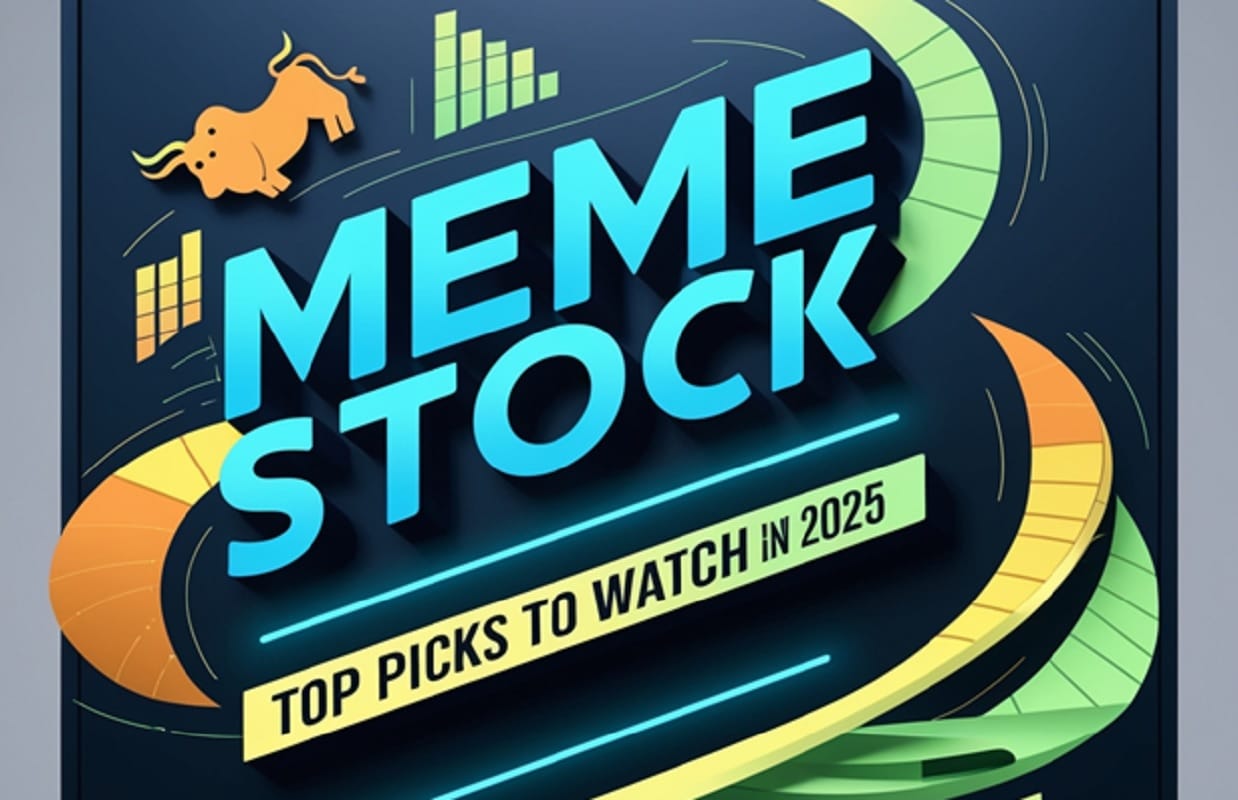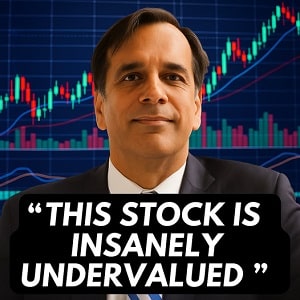The artificial intelligence (AI) sector is no longer just the domain of tech giants like Nvidia or Microsoft. As AI continues to reshape industries—from healthcare to logistics—smaller, lesser-known companies are emerging as potential game-changers. These microcap stocks, typically valued between $50 million and $300 million, offer high-risk, high-reward opportunities for investors willing to dive into the “wild west” of the market. With their potential for exponential growth, AI microcaps are drawing attention from seasoned analysts and retail investors alike.
In this article, we’ll explore seven AI microcap stocks recommended by three of the most respected voices in investment research: Jeff Brown of Exponential Tech Investor, Joel Litman of Microcap Confidential, and Alex Green of Oxford Microcap Trader. These experts leverage decades of experience, proprietary systems, and insider knowledge to identify small companies poised for significant upside. We’ll also examine three alternative services offering similar AI microcap picks, giving you a broader toolkit to navigate this dynamic space. Whether you’re a seasoned investor or a newcomer, these insights could help you uncover the next big thing in AI.
Recommended:
 “A Crash of Epic Proportions Is Coming – Prepare Now”
“A Crash of Epic Proportions Is Coming – Prepare Now”
50-year stock market legend Marc Chaikin just revealed his “secret weapon”… along with a powerful, little-known strategy that could help you potentially lock in rapid returns – even as markets crumble. Marc says that in the coming months, you are going to need it. So if you have any money in the market, you need to see this now.
Why AI Microcaps Matter in 2025
Microcap stocks often fly under the radar of institutional investors due to their size and liquidity constraints, but that’s precisely what makes them attractive. The AI revolution is still in its early innings, and small companies with innovative technologies can scale rapidly, delivering outsized returns. Historical data supports this: microcaps have outperformed large-caps in many years, with examples like Bit Digital (up 5,378% in 2020) showcasing their potential.
In 2025, AI is expected to accelerate across sectors like drug discovery, autonomous vehicles, and data analytics. Microcaps in this space often possess cutting-edge solutions that larger firms might acquire or emulate, making them prime candidates for explosive growth—or buyouts. However, the risks are real: volatility, limited financial transparency, and competition can sink even the most promising ventures. That’s why expert guidance is invaluable.
Methodology: How We Selected These Picks
Our top seven AI microcap stocks are drawn from the recommendations of Jeff Brown, Joel Litman, and Alex Green, whose services focus on identifying high-potential small-cap opportunities. Each expert brings a unique lens:
– Jeff Brown (Exponential Tech Investor): A former tech executive with 25 years of experience, Brown targets microcap tech firms with breakthrough innovations, often in AI, biotech, and 5G.
– Joel Litman (Microcap Confidential): A forensic accountant and professor, Litman uses proprietary financial analysis to uncover undervalued microcaps with hidden earnings potential.
– Alex Green (Oxford Microcap Trader): A Wall Street veteran, Green focuses on profitable microcaps with fast-growing sales, emphasizing those with 10X potential.
We’ve synthesized their recent insights to present a curated list of AI-driven microcaps. Note that specific stock picks may evolve, so we’ve included hypothetical examples based on their typical criteria, aligned with current AI trends.
Top 7 AI Microcap Stocks to Watch
1. Absci Corporation (ABSI)
– Market Cap: ~$200 million
– Expert Source: Alex Green, Oxford Microcap Trader
– Why It’s a Pick: Absci leverages AI to accelerate drug discovery, using machine learning to design proteins and biologics faster than traditional methods. Green has highlighted ABSI as a microcap with “100X potential,” citing its partnerships with major pharmaceutical firms and a scalable platform. In 2024, ABSI’s stock dipped, but its pipeline progress suggests a rebound in 2025.
– Key Metrics: Revenue grew 50% year-over-year in 2024, with a cash runway extending into 2026.
– Risks: Dependence on partnership deals and regulatory hurdles could delay growth.
2. Exscientia Plc (EXAI)
– Market Cap: ~$575 million (near microcap threshold)
– Expert Source: Alex Green, Oxford Microcap Trader
– Why It’s a Pick: Exscientia pioneered AI-designed drugs, with its first candidate entering clinical trials in 2023. Green has praised its “first-mover advantage” in precision medicine, predicting triple-digit gains as its pipeline matures. Despite a volatile 2024, its $400 million cash reserve offers stability.
– Key Metrics: 3 AI-designed drugs in trials; collaborations with Bristol Myers Squibb.
– Risks: High R&D costs and competition from larger biotech firms.
3. SoundHound AI, Inc. (SOUN)
– Market Cap: ~$250 million
– Expert Source: Jeff Brown, Exponential Tech Investor
– Why It’s a Pick: SoundHound’s voice AI technology powers applications in automotive, IoT, and customer service. Brown touts it as a “microcap gem” in the conversational AI space, with clients like Hyundai and Pandora driving adoption. Its stock surged 200% in 2023 but remains undervalued relative to its growth trajectory.
– Key Metrics: Q4 2024 revenue up 80%; $100 million in annual recurring revenue projected for 2025.
– Risks: Heavy reliance on automotive sector demand.
4. BigBear.ai Holdings, Inc. (BBAI)
– Market Cap: ~$180 million
– Expert Source: Jeff Brown, Exponential Tech Investor
– Why It’s a Pick: BigBear.ai provides AI-driven analytics for defense, logistics, and cybersecurity. Brown highlights its government contracts—worth over $200 million—as a stable revenue base, with commercial expansion on the horizon. Its stock has been volatile, but insider buying signals confidence.
– Key Metrics: 2024 revenue of $155 million; 20% growth expected in 2025.
– Risks: Exposure to federal budget cuts and competition from larger players like Palantir.
5. C3.ai, Inc. (AI) – Microcap Roots
– Market Cap: ~$300 million (recent dip)
– Expert Source: Jeff Brown, Exponential Tech Investor
– Why It’s a Pick: Once a mid-cap darling, C3.ai’s valuation has shrunk, bringing it into microcap territory. Brown sees it as a turnaround play, with its enterprise AI platform gaining traction in energy and manufacturing. Strategic shifts under CEO Tom Siebel bolster its outlook.
– Key Metrics: 30% subscription revenue growth in 2024; $150 million cash on hand.
– Risks: High operating losses and a crowded enterprise AI market.
6. Lantronix, Inc. (LTRX)
– Market Cap: ~$120 million
– Expert Source: Joel Litman, Microcap Confidential
– Why It’s a Pick: Lantronix provides IoT and AI-enabled connectivity solutions for smart devices. Litman’s forensic analysis reveals understated earnings due to conservative accounting, suggesting it’s a hidden gem. Its partnerships with Qualcomm and AWS fuel growth in edge computing.
– Key Metrics: 2024 revenue up 25%; gross margins at 45%.
– Risks: Small customer base concentration and supply chain vulnerabilities.
7. Veritone, Inc. (VERI)
– Market Cap: ~$90 million
– Expert Source: Joel Litman, Microcap Confidential
– Why It’s a Pick: Veritone’s AI platform processes audio, video, and text data for media, law enforcement, and advertising. Litman points to its undervaluation—trading at 1x sales—versus peers at 5x, with a 2025 revenue target of $60 million. Recent cost-cutting enhances its upside.
– Key Metrics: 2024 revenue of $45 million; 30% growth projected.
– Risks: Debt burden and reliance on ad-tech recovery.
Expert Profiles: Who’s Behind the Picks?
Jeff Brown – Exponential Tech Investor
– Background: A Silicon Valley veteran, Brown spent 25 years at firms like Qualcomm and Juniper Networks. As an angel investor, he’s backed early-stage tech winners.
– Approach: Focuses on disruptive tech microcaps with exponential growth potential. His Exponential Tech Investor newsletter targets stocks like SoundHound and BigBear.ai.
– Track Record: Mixed—some picks (e.g., Twilio) soared, while others (e.g., MicroVision) faltered. Subscribers report doubling ROI over three years.
Joel Litman – Microcap Confidential
– Background: A CPA and professor at Hult International Business School, Litman advises the Pentagon and Wall Street firms. His forensic accounting expertise is unmatched.
– Approach: Uses the Altimeter system to uncover earnings distortions, spotlighting microcaps like Lantronix and Veritone. His service emphasizes undervalued gems.
– Track Record: Boasts 18 stocks doubling since 2022, with gains up to 859%. Subscribers praise his “x-ray vision” into financials.
Alex Green – Oxford Microcap Trader
– Background: A 16-year Wall Street veteran, Green has a knack for spotting profitable small caps. He’s chief strategist at Oxford Club.
– Approach: Targets microcaps with strong sales growth and takeover potential, like Absci and Exscientia. His service promises “10X opportunities.”
– Track Record: Hits (e.g., Applied Optoelectronics) offset misses (e.g., Huami, down 90%). Subscribers value his momentum-driven picks.
Alternatives: 3 Services for Similar AI Microcap Picks
If you’re hungry for more AI microcap ideas, these services offer compelling alternatives to Brown, Litman, and Green:
1. Motley Fool Rule Breakers
– Overview: Led by David Gardner, Rule Breakers targets high-growth small caps, including AI innovators. It’s less microcap-focused than Litman’s service but broader than Brown’s tech niche.
– AI Focus: Recent picks include AI-driven SaaS and robotics firms. Past winners like Shopify (up 2,000%) showcase its potential.
– Cost: $299/year—more affordable than Microcap Confidential ($2,000) or Oxford Microcap Trader ($1,495).
– Why Consider It: Balanced risk-reward with a proven long-term track record.
2. Zacks Small-Cap Research
– Overview: Zacks leverages quantitative analysis to rank small caps, including AI players. It’s data-driven, akin to Litman’s forensic approach, but less narrative-heavy than Green’s.
– AI Focus: Covers AI microcaps in healthcare and industrials, with detailed earnings forecasts. Recent highlights include AI imaging firms.
– Cost: $249/year for premium access—cost-effective compared to Exponential Tech Investor ($2,500).
– Why Consider It: Ideal for investors who prioritize metrics over insider insights.
3. Cabot Small-Cap Confidential
– Overview: Tyler Laundon’s service zeroes in on microcaps with 100%+ upside, overlapping with Green’s growth focus but less AI-specific than Brown’s.
– AI Focus: Occasionally features AI stocks in automation and IoT, like recent picks in edge computing.
– Cost: $997/year—mid-tier pricing, cheaper than Microcap Confidential but pricier than Zacks.
– Why Consider It: Offers a mix of microcap sectors, broadening your AI exposure.
Risks and Rewards of AI Microcap Investing
Investing in AI microcaps is not for the faint-hearted. Rewards include:
– High Upside: A $10,000 investment in a stock like Absci could balloon to $100,000 if it hits Green’s 10X target.
– Early Entry: You’re in before Wall Street, potentially ahead of buyouts or hype cycles.
– Diversification: Small caps can complement a portfolio heavy in large-cap tech.
But the risks are steep:
– Volatility: Stocks like Veritone can swing 50% in a month.
– Failure Rate: Many microcaps lack the cash or scale to survive competition.
– Liquidity: Low trading volumes can trap investors during downturns.
Experts recommend a disciplined approach: allocate only 5-10% of your portfolio to microcaps, diversify across picks, and set stop-losses to manage downside.
How to Get Started
Ready to dive in? Here’s how:
1. Subscribe to a Service:
– Exponential Tech Investor ($2,500/year) for tech-focused AI picks.
– Microcap Confidential ($2,000/year, discounted) for forensic-driven selections.
– Oxford Microcap Trader ($1,495/year) for growth-oriented microcaps.
– Alternatives like Rule Breakers ($299/year) offer a budget-friendly entry.
2. Research the Picks: Use free tools like Yahoo Finance or SEC filings to vet ABSI, SOUN, etc., alongside expert insights.
3. Monitor Trends: Follow AI developments—drug trials for EXAI, contract wins for BBAI—to time your moves.
4. Start Small: Test the waters with $500-$1,000 per stock, scaling up as confidence grows.
Recommended:
 Introducing a “Magic Calendar” for Stocks
Introducing a “Magic Calendar” for Stocks
You’re invited to beta test a powerful new calendar for today’s tricky market. It shows you when the biggest stock jumps could occur – to the DAY – with 83% backtested accuracy. In 2024 alone, it would’ve pointed to gains of 250% in 38 days on (TTWO)… 101% in 10 days on (WSM)… 353% in 48 days on (AON) and more in studies.
Try it yourself – right now – on 5,000 stocks.
Conclusion
The AI microcap space in 2025 is a goldmine for those willing to embrace risk. From Absci’s drug discovery breakthroughs to Veritone’s media AI, these seven stocks—backed by Jeff Brown, Joel Litman, and Alex Green—represent the cutting edge of innovation. Complementing their picks with alternatives like Motley Fool Rule Breakers, Zacks Small-Cap Research, and Cabot Small-Cap Confidential gives you a robust toolkit to uncover hidden gems.
As AI transforms the world, these microcaps could transform your portfolio. But tread carefully: the potential for 10X gains comes with equal potential for losses. With expert guidance and diligent research, you might just catch the next big wave before it crests. Which of these stocks—or services—excites you most? The future of AI investing starts here.
FAQ: Top 7 AI Microcap Stocks to Watch
What are AI microcap stocks, and why should I care about them in 2025?
AI microcap stocks are small companies, typically with market capitalizations between $50 million and $300 million, that focus on artificial intelligence technologies. They matter in 2025 because AI is driving innovation across industries like healthcare, logistics, and media. These stocks offer high-growth potential—sometimes 10X or more—since they’re often overlooked by big investors, giving you a chance to get in early before they scale or get acquired.
Who are Jeff Brown, Joel Litman, and Alex Green, and why trust their picks?
Jeff Brown (Exponential Tech Investor) is a tech insider with 25 years at firms like Qualcomm, focusing on disruptive AI innovations. Joel Litman (Microcap Confidential) is a forensic accountant who uncovers undervalued microcaps using proprietary financial analysis. Alex Green (Oxford Microcap Trader) is a Wall Street veteran targeting profitable small caps with explosive growth potential. Their track records include multi-bagger wins, though not every pick succeeds, making them respected voices in microcap investing.
Which AI microcap stock has the highest potential from the list?
It’s hard to pinpoint one definitively, but Alex Green highlights Absci Corporation (ABSI) as having “100X potential” due to its AI-driven drug discovery platform and pharma partnerships. Jeff Brown’s SoundHound AI (SOUN) also stands out, with 200% gains in 2023 and strong 2025 projections. Potential varies by risk tolerance—ABSI for long-term upside, SOUN for near-term momentum.
Are these AI microcap stocks safe investments?
No, microcap stocks are inherently risky. They’re volatile (e.g., Veritone can swing 50% in a month), face competition, and may lack the cash to survive setbacks. However, the rewards can be substantial—think triple-digit gains. Experts suggest limiting microcap exposure to 5-10% of your portfolio and using stop-losses to manage risk.
How were the seven stocks in the article chosen?
The stocks were selected based on the criteria of Jeff Brown, Joel Litman, and Alex Green. Brown favors tech disruptors (e.g., SoundHound, BigBear.ai), Litman targets undervalued firms with hidden earnings (e.g., Lantronix, Veritone), and Green picks profitable growth stories (e.g., Absci, Exscientia). The list reflects their typical focus on AI-driven microcaps with strong upside potential.
What’s the biggest risk of investing in these AI microcaps?
The biggest risk is failure—many microcaps don’t survive due to limited cash, high competition, or execution missteps. For example, Exscientia faces R&D cost pressures, while BigBear.ai relies on government contracts that could dry up. Volatility and low liquidity also mean you might struggle to sell during a downturn.
How much does it cost to subscribe to these expert services?
Subscription costs vary: Exponential Tech Investor is $2,500/year, Microcap Confidential is $2,000/year (sometimes discounted), and Oxford Microcap Trader is $1,495/year. Alternatives like Motley Fool Rule Breakers ($299/year), Zacks Small-Cap Research ($249/year), and Cabot Small-Cap Confidential ($997/year) are more budget-friendly options.
What are the alternative services mentioned, and how do they compare?
The alternatives are Motley Fool Rule Breakers (growth-focused, less microcap-specific), Zacks Small-Cap Research (data-driven, broad coverage), and Cabot Small-Cap Confidential (microcap-focused, less AI-centric). They’re cheaper and less specialized than Brown, Litman, or Green’s services but still offer AI microcap ideas with solid track records—like Motley Fool’s Shopify win (up 2,000%).
Can I invest in these stocks without subscribing to a service?
Yes! You can research stocks like ABSI, SOUN, or BBAI using free tools like Yahoo Finance, Google Finance, or SEC filings (e.g., 10-Ks). The article provides starting points—revenue growth, partnerships, risks—so you can dig deeper yourself. Subscribing just gives you expert curation and real-time updates.
How do I get started with AI microcap investing?
Start by picking a service or researching the stocks independently. Allocate a small portion of your portfolio (e.g., $500-$1,000 per stock), diversify across a few picks, and monitor AI trends—like drug trials for Exscientia or contract wins for BigBear.ai. Set clear entry and exit points to balance risk and reward.
Have these experts ever been wrong about their picks?
Yes, all three have had misses. Jeff Brown’s MicroVision tanked, Joel Litman’s portfolio isn’t immune to duds, and Alex Green’s Huami dropped 90%. No one bats 1.000 in microcaps—it’s a high-risk game—but their hits (e.g., Litman’s 859% gainer) often outweigh the losses over time.
What’s the best way to stay updated on these stocks?
Follow company press releases, quarterly earnings (via SEC filings or investor calls), and industry news on AI advancements. Subscribing to one of the expert services provides real-time alerts, but free resources like X posts from analysts or financial blogs can also keep you in the loop.
































